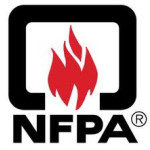- Industry: Fire safety
- Number of terms: 98780
- Number of blossaries: 0
- Company Profile:
Established in 1896, NFPA's mission is to reduce the worldwide burden of fire and other hazards on the quality of life by providing and advocating consensus codes and standards, research, training, and education.
Original or added building or construction materials, features, and finishes that existed during the period that is deemed to be most architecturally or historically significant, or both.
Industry:Fire safety
Organizations providing law enforcement, emergency medical, fire, rescue, communications, and related support services. The term public safety agency shall include any public, governmental, private, industrial, or military organization engaged in one or more of these activities.
Industry:Fire safety
Organic peroxide formulations that burn rapidly and that present a moderate reactivity hazard.
Industry:Fire safety
Organizations providing law enforcement, emergency medical, fire, rescue, communications, and related support services.
Industry:Fire safety
Organic peroxide formulations that burn in the same manner as ordinary combustibles and that present a minimal reactivity hazard.
Industry:Fire safety
Ordinary (moderate) hazard occupancies shall be classified as locations where the quantity and combustibility of Class A combustible materials and Class B flammables is moderate and fires with moderate rates of heat release are expected. These occupancies consist of fire hazards that only occasionally contain Class A combustible materials beyond normal anticipated furnishings and/or the total quantity of Class B flammables typically expected to be present is from 1 gal to 5 gal (3. 8 L to 18. 9 L) in any room or area.
Industry:Fire safety
Operations that include acetylene generation, storage, purification, compression, cylinder filling, cylinder storage, and calcium carbide storage.
Industry:Fire safety
Operation without human intervention. This operation includes, but is not limited to, heat, rate of heat rise, smoke, or pressure change.
Industry:Fire safety
Operations performed at the scene that include providing for rescuer comfort, scene lighting, scene management, and equipment readiness.
Industry:Fire safety
Operation of equipment in excess of normal, full-load rating, or of a conductor in excess of rated ampacity that, when it persists for a sufficient length of time, would cause damage or dangerous overheating. A fault, such as a short circuit or a ground fault, is not an overload.
Industry:Fire safety
